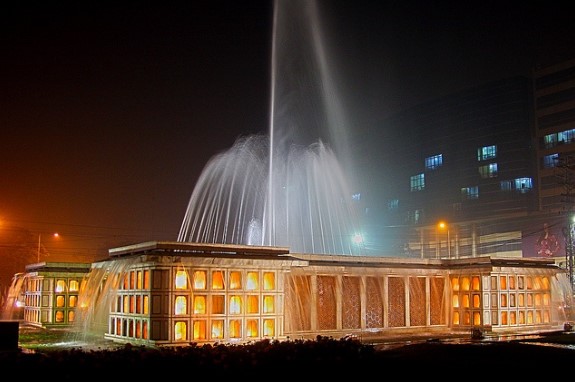TimeLine 1947 to 2024
Since its inception as part of Pakistan in 1947, Lahore has emerged as a dynamic city, witnessing remarkable growth and transformation. From its role as the capital of West Pakistan to its current status as the cultural and economic heart of Punjab province, Lahore has experienced rapid urbanization, population expansion, and infrastructural development. Over the decades, the city has faced various challenges, including the aftermath of partition, urban congestion, and environmental issues. However, Lahore has also celebrated its rich cultural heritage, with UNESCO World Heritage Sites like the Lahore Fort and Shalimar Gardens showcasing its architectural splendor. Today, Lahore stands as a bustling metropolis, home to over 13 million people, with a vibrant blend of tradition and modernity, making it one of Pakistan's most iconic cities.
1947: Lahore becomes part of Pakistan following the partition of British India. The city witnesses large-scale migration as millions of refugees arrive from India, significantly impacting its demographics and infrastructure.
1951: Population of Lahore reaches approximately 1 million, marking a significant increase since independence.
1955: Lahore becomes the capital of West Pakistan, further solidifying its status as a major administrative and cultural center.
1956: The University of the Punjab, one of the oldest and most prestigious educational institutions in Pakistan, continues to flourish, contributing to Lahore's reputation as an academic hub.
1961: Population of Lahore surpasses 2 million, reflecting rapid urbanization and industrialization in the post-independence period.
1965: Lahore plays a pivotal role in the Indo-Pakistani War, with significant battles taking place in the nearby areas of Kasur and Sialkot.
1972: Lahore becomes the capital of Punjab province after the dissolution of West Pakistan, consolidating its position as a regional powerhouse.
1974: The historic Lahore Resolution Day is celebrated annually on March 23rd, commemorating the adoption of the Lahore Resolution in 1940, which called for the creation of a separate homeland for Muslims in South Asia.
1981: Population of Lahore exceeds 3 million, highlighting continued population growth and urban expansion.
1984: The Lahore Fort and Shalimar Gardens are designated as UNESCO World Heritage Sites, recognizing their cultural significance and architectural beauty.
1998: Lahore experiences rapid urbanization and industrial growth, with a population of over 5 million. The city's infrastructure struggles to keep pace with the increasing demands of its growing population.
2003: The Lahore Ring Road project is initiated to address traffic congestion in the city and improve connectivity between different areas.
2010: The historic Badshahi Mosque undergoes restoration work to preserve its grandeur and historical significance.
2011: Population of Lahore crosses the 10 million mark, making it one of the most populous cities in Pakistan. The city continues to face challenges related to infrastructure, pollution, and urban planning.
2013: The Lahore Metro Bus System is inaugurated, providing efficient public transportation and easing traffic congestion on key routes.
2017: Lahore hosts the final of the Pakistan Super League (PSL) cricket tournament, boosting its profile as a sports destination and showcasing its ability to organize large-scale events.
2020: Lahore faces challenges related to air pollution and environmental degradation, prompting initiatives for sustainable development and green initiatives.
2022: Lahore continues to grow as a cultural and economic hub, with ongoing infrastructure projects and investments attracting businesses and residents from across the country.
2024: Population estimates suggest Lahore's population has surpassed 13 million, cementing its status as one of the largest and most vibrant cities in Pakistan, with a rich tapestry of history, culture, and diversity.
